Self Improvement
July 31, 2025
5
Min
How to Improve Critical Thinking Skills at Work (Backed by Research)
Critical Thinking
|
That question has punctured more than one strategy meeting we've facilitated. And it gets to the heart of why critical thinking is so vital for leaders today.
We’re surrounded by decisions - small, large, reversible, irreversible. But in a world of information glut, AI-generated content, and increasing complexity, what separates good judgement from just good intentions is our ability to think clearly, challenge assumptions, and see beyond surface-level solutions.
This isn’t about “being smart.”
It’s about developing habits of mind that can be learned, refined, and applied consistently - even under pressure.
Let’s unpack how.
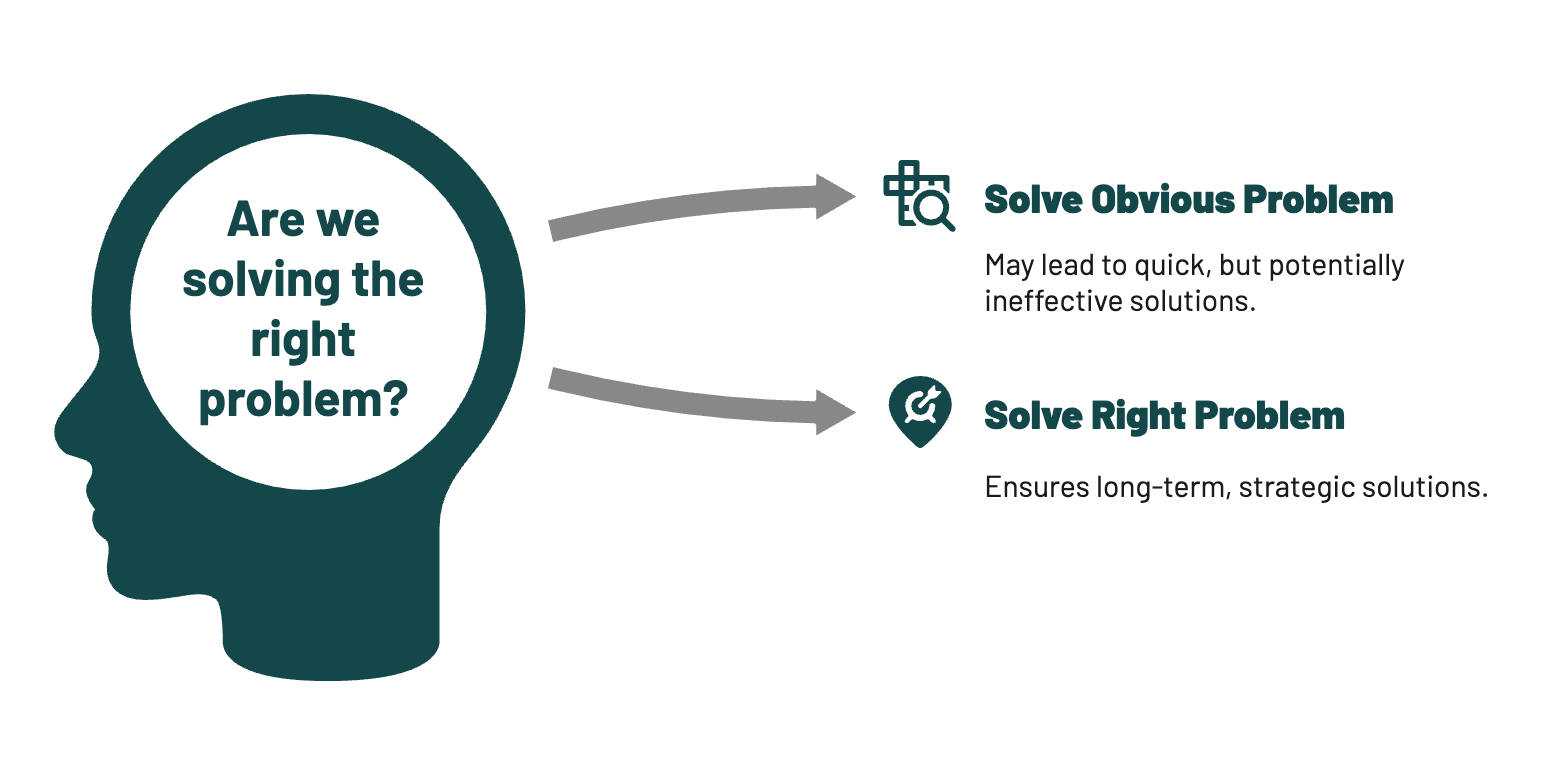
In a global PwC survey, 77% of CEOs cited “the ability to think critically, analyse and solve problems” as the most important skill for the future. Yet only 34% felt their teams were strong in this area.
That gap shows up in subtle but costly ways:
We’ve seen this lead to product flops, culture clashes, failed change initiatives. And it’s rarely about lack of effort - it’s a thinking issue.
When organisations embed critical thinking, they see fewer blind spots, better cross-functional dialogue, and sharper strategic pivots. It creates resilience in the system.
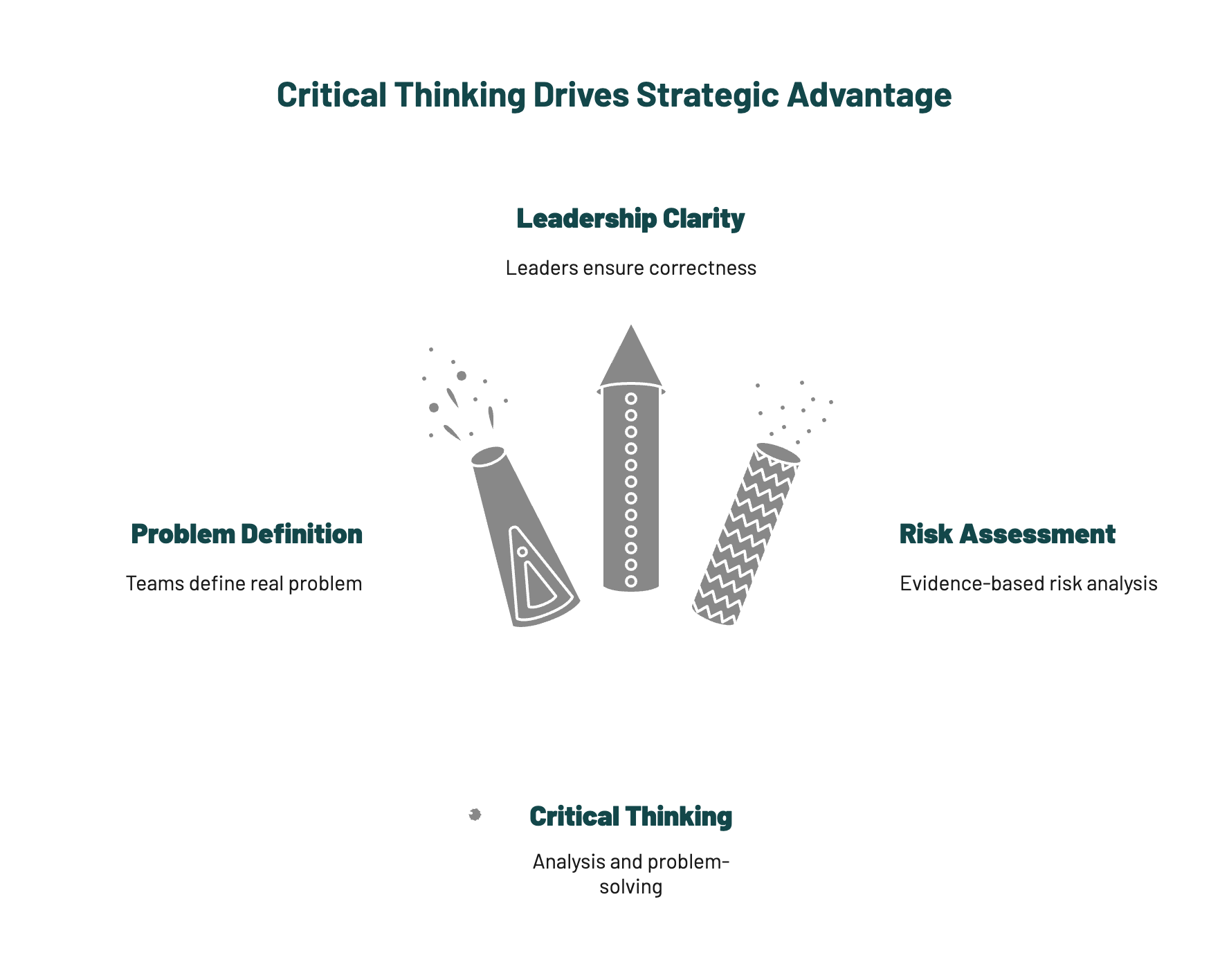
We use a 5-part model called CLEAR to help leaders and teams improve critical thinking in real time. It’s not a checklist, but a rhythm.
Most poor decisions start with a poorly framed question.
Is this really about performance... or trust?
Are we fixing the process... or avoiding conflict?
Great critical thinkers slow down to clarify what’s really being asked, what assumptions are baked in, and what the stakes are.
Reflection prompt:
What’s the real question behind the question in your current top priority?
Micro-action:
Before your next team huddle, reframe the issue using: “What are we really trying to decide here?”
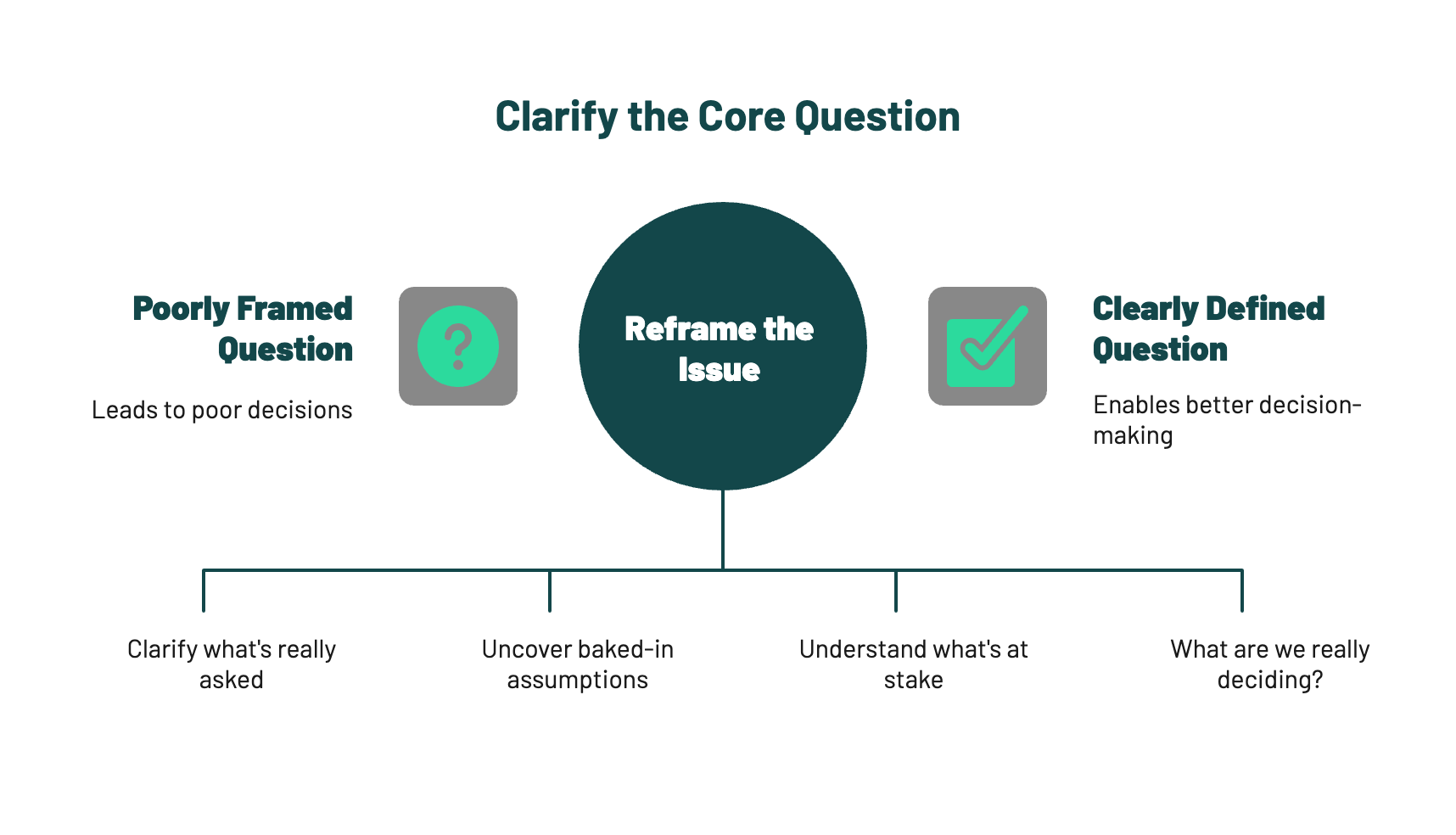
Confirmation bias is one of the most insidious traps in decision-making. We naturally seek data that supports our views and ignore or downplay the rest.
A 2021 Harvard Business Review study found that teams that actively seek disconfirming evidence make higher-quality decisions 87% of the time.
Practice asking:
Micro-action:
Designate a “devil’s advocate” in your next strategy session. Rotate the role monthly.
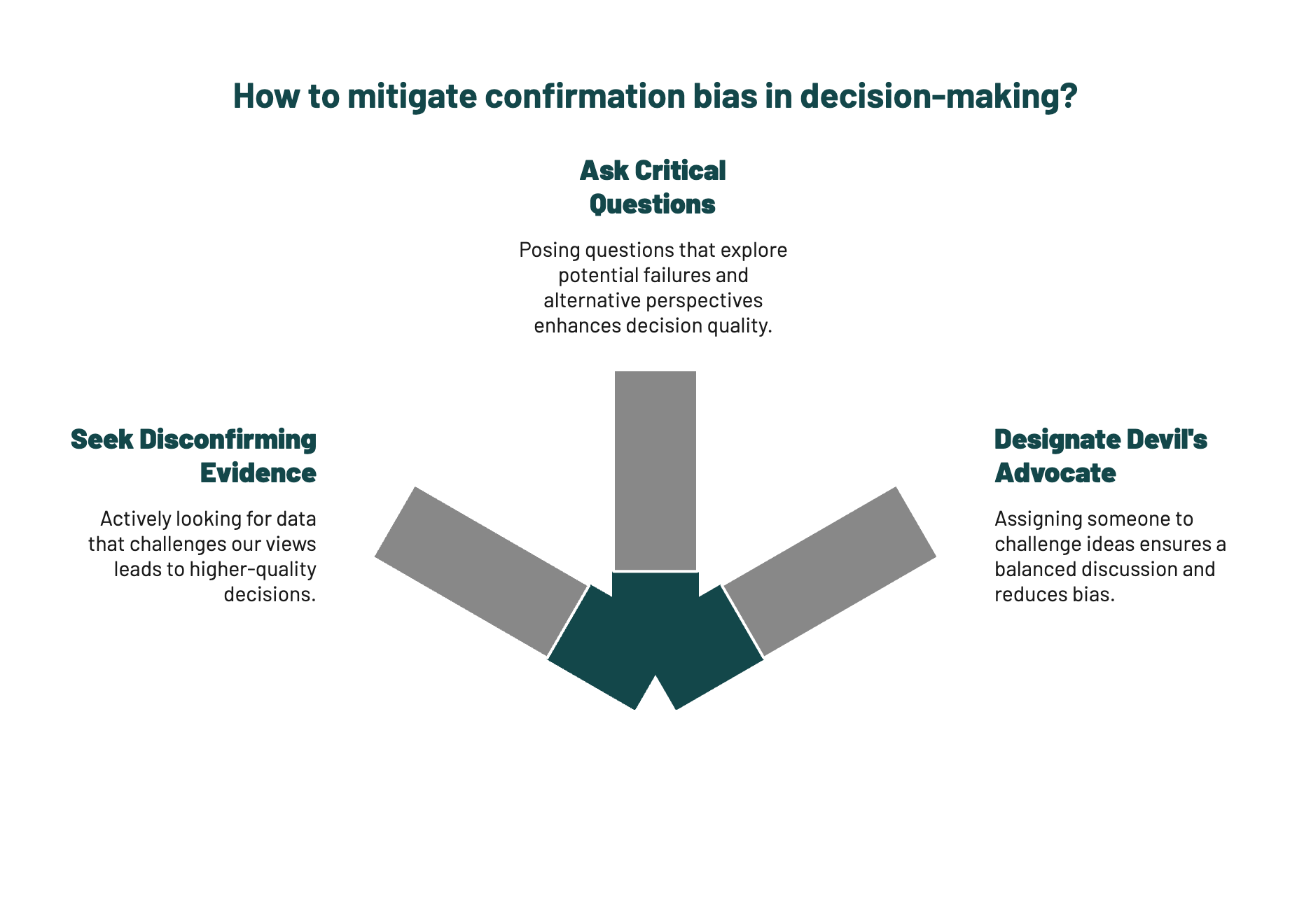
Critical thinking thrives on cognitive diversity. The best ideas often come from unexpected quarters - a frontline customer rep, a junior analyst, or even a competitor’s playbook.
Make it normal to explore viewpoints across:
Reflection prompt:
Whose voice are we not hearing that could challenge our current thinking?
Micro-action:
Schedule a 15-minute reverse mentoring session with someone two levels below you.
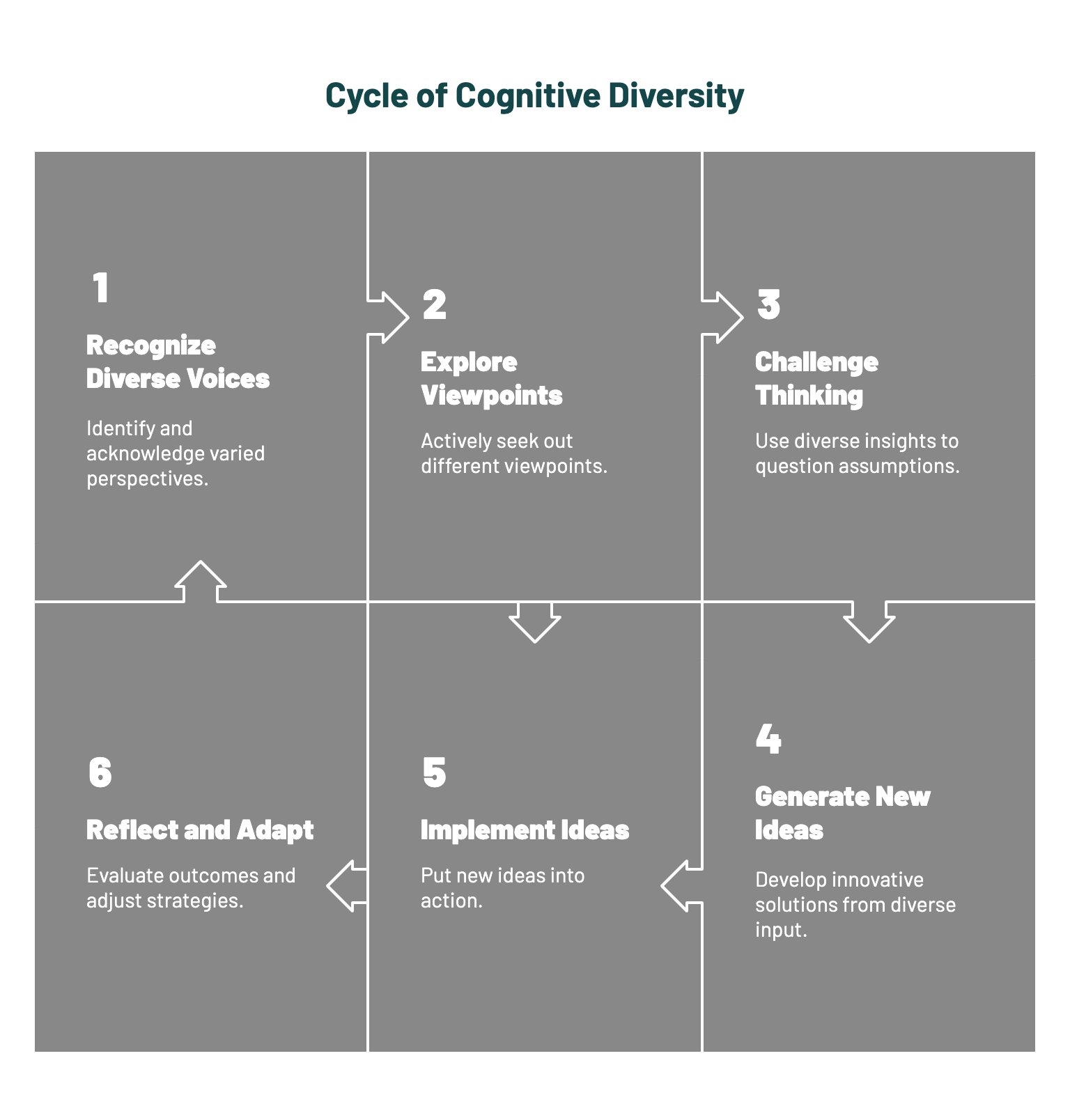
Sometimes we’re swayed by charisma or consensus instead of clarity. A well-presented idea can hide weak reasoning.
Here’s where rigour matters. Ask:
We call this “x-raying the thinking.” It’s not about being combative - it’s about tightening the logic.
Micro-action:
Use the phrase “Walk me through the reasoning behind that” at least once a week in team meetings.
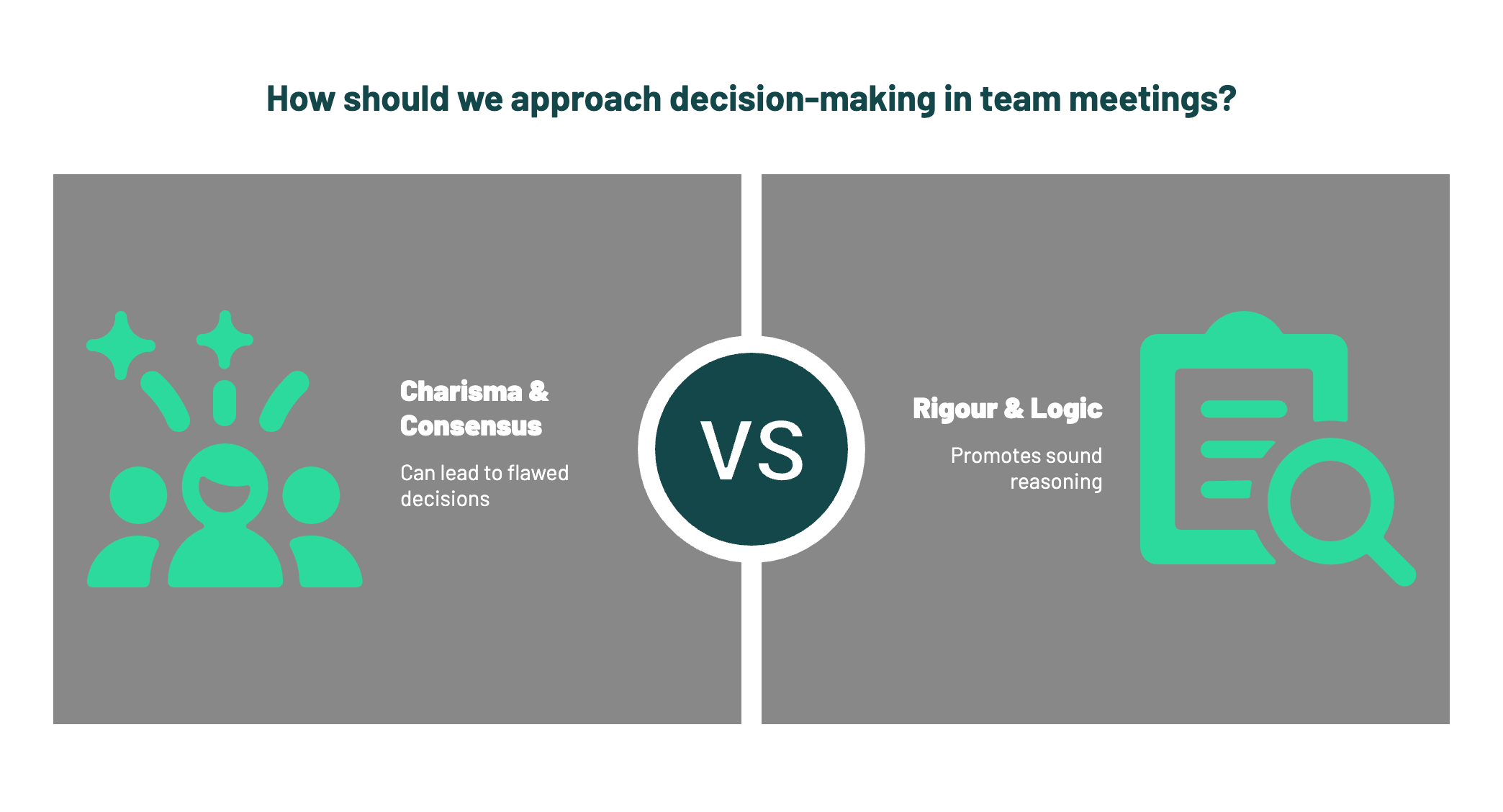
Critical thinking isn’t a one-time event. It’s an iterative loop.
After a decision:
High-performing teams institutionalise this through after-action reviews, pre-mortems, and retrospective learning. It’s not just about getting things done - it’s about getting things right more often over time.
Micro-action:
Build a “thinking debrief” into every major project post-mortem.
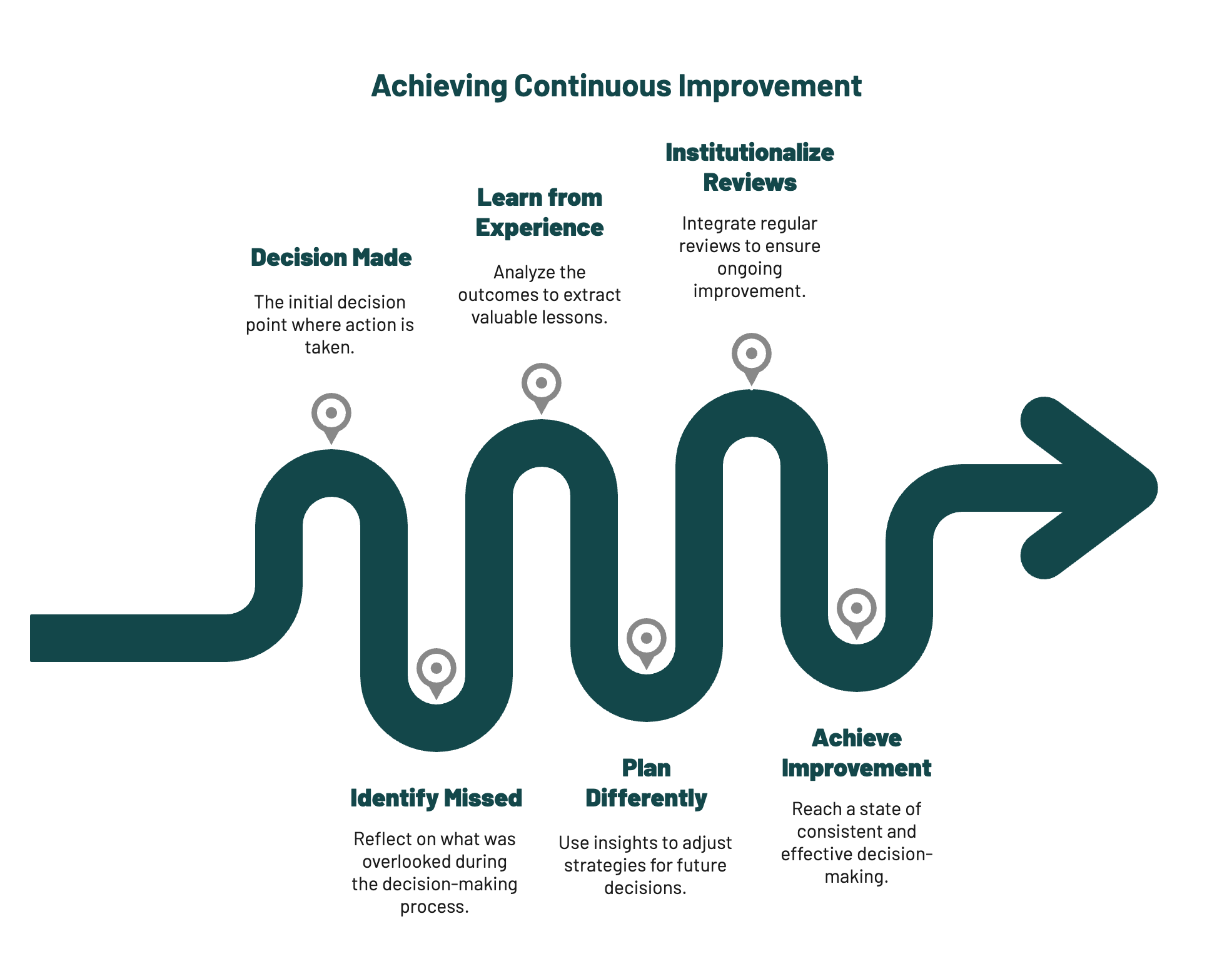
You don’t need a massive overhaul. Start with simple but deliberate shifts:
Pro Tip:
Critical thinking is contagious. Once one person models it consistently, others raise their game.
Even smart, seasoned leaders fall into thinking traps. Here are four we see most:
Remedy:
Ask: “Are we being wise, or just fast?” This one question can shift the tone of a meeting.
Prompt 1: When was the last time you changed your mind about a major decision? What helped?
Prompt 2: Who in your team routinely challenges your assumptions - and do you reward them for it?
Teams that prioritise critical thinking:
We’ve watched organisations turn around culture, strategy, and even client retention by instilling disciplined thinking routines. Not overnight - but steadily.
The return on better thinking compounds.
Run a pre-mortem on a live initiative.
Pick a current project. Ask your team to imagine it’s six months later and it flopped. What happened? What can you do now to prevent that?
It’s a deceptively simple move that rewires how your team anticipates risk and complexity.
Team SHIFT
PS: Have a thinking routine or critical question that’s reshaped your decision-making? We’d love to hear it.
Are we solving the right problem, or just the obvious one?
That question has punctured more than one strategy meeting we've facilitated. And it gets to the heart of why critical thinking is so vital for leaders today.
We’re surrounded by decisions - small, large, reversible, irreversible. But in a world of information glut, AI-generated content, and increasing complexity, what separates good judgement from just good intentions is our ability to think clearly, challenge assumptions, and see beyond surface-level solutions.
This isn’t about “being smart.”
It’s about developing habits of mind that can be learned, refined, and applied consistently - even under pressure.
Let’s unpack how.

In a global PwC survey, 77% of CEOs cited “the ability to think critically, analyse and solve problems” as the most important skill for the future. Yet only 34% felt their teams were strong in this area.
That gap shows up in subtle but costly ways:
We’ve seen this lead to product flops, culture clashes, failed change initiatives. And it’s rarely about lack of effort - it’s a thinking issue.
When organisations embed critical thinking, they see fewer blind spots, better cross-functional dialogue, and sharper strategic pivots. It creates resilience in the system.

We use a 5-part model called CLEAR to help leaders and teams improve critical thinking in real time. It’s not a checklist, but a rhythm.
Most poor decisions start with a poorly framed question.
Is this really about performance... or trust?
Are we fixing the process... or avoiding conflict?
Great critical thinkers slow down to clarify what’s really being asked, what assumptions are baked in, and what the stakes are.
Reflection prompt:
What’s the real question behind the question in your current top priority?
Micro-action:
Before your next team huddle, reframe the issue using: “What are we really trying to decide here?”

Confirmation bias is one of the most insidious traps in decision-making. We naturally seek data that supports our views and ignore or downplay the rest.
A 2021 Harvard Business Review study found that teams that actively seek disconfirming evidence make higher-quality decisions 87% of the time.
Practice asking:
Micro-action:
Designate a “devil’s advocate” in your next strategy session. Rotate the role monthly.

Critical thinking thrives on cognitive diversity. The best ideas often come from unexpected quarters - a frontline customer rep, a junior analyst, or even a competitor’s playbook.
Make it normal to explore viewpoints across:
Reflection prompt:
Whose voice are we not hearing that could challenge our current thinking?
Micro-action:
Schedule a 15-minute reverse mentoring session with someone two levels below you.

Sometimes we’re swayed by charisma or consensus instead of clarity. A well-presented idea can hide weak reasoning.
Here’s where rigour matters. Ask:
We call this “x-raying the thinking.” It’s not about being combative - it’s about tightening the logic.
Micro-action:
Use the phrase “Walk me through the reasoning behind that” at least once a week in team meetings.

Critical thinking isn’t a one-time event. It’s an iterative loop.
After a decision:
High-performing teams institutionalise this through after-action reviews, pre-mortems, and retrospective learning. It’s not just about getting things done - it’s about getting things right more often over time.
Micro-action:
Build a “thinking debrief” into every major project post-mortem.

You don’t need a massive overhaul. Start with simple but deliberate shifts:
Pro Tip:
Critical thinking is contagious. Once one person models it consistently, others raise their game.
Even smart, seasoned leaders fall into thinking traps. Here are four we see most:
Remedy:
Ask: “Are we being wise, or just fast?” This one question can shift the tone of a meeting.
Prompt 1: When was the last time you changed your mind about a major decision? What helped?
Prompt 2: Who in your team routinely challenges your assumptions - and do you reward them for it?
Teams that prioritise critical thinking:
We’ve watched organisations turn around culture, strategy, and even client retention by instilling disciplined thinking routines. Not overnight - but steadily.
The return on better thinking compounds.
Run a pre-mortem on a live initiative.
Pick a current project. Ask your team to imagine it’s six months later and it flopped. What happened? What can you do now to prevent that?
It’s a deceptively simple move that rewires how your team anticipates risk and complexity.
Team SHIFT
PS: Have a thinking routine or critical question that’s reshaped your decision-making? We’d love to hear it.
Are we solving the right problem, or just the obvious one?
That question has punctured more than one strategy meeting we've facilitated. And it gets to the heart of why critical thinking is so vital for leaders today.
We’re surrounded by decisions - small, large, reversible, irreversible. But in a world of information glut, AI-generated content, and increasing complexity, what separates good judgement from just good intentions is our ability to think clearly, challenge assumptions, and see beyond surface-level solutions.
This isn’t about “being smart.”
It’s about developing habits of mind that can be learned, refined, and applied consistently - even under pressure.
Let’s unpack how.

In a global PwC survey, 77% of CEOs cited “the ability to think critically, analyse and solve problems” as the most important skill for the future. Yet only 34% felt their teams were strong in this area.
That gap shows up in subtle but costly ways:
We’ve seen this lead to product flops, culture clashes, failed change initiatives. And it’s rarely about lack of effort - it’s a thinking issue.
When organisations embed critical thinking, they see fewer blind spots, better cross-functional dialogue, and sharper strategic pivots. It creates resilience in the system.

We use a 5-part model called CLEAR to help leaders and teams improve critical thinking in real time. It’s not a checklist, but a rhythm.
Most poor decisions start with a poorly framed question.
Is this really about performance... or trust?
Are we fixing the process... or avoiding conflict?
Great critical thinkers slow down to clarify what’s really being asked, what assumptions are baked in, and what the stakes are.
Reflection prompt:
What’s the real question behind the question in your current top priority?
Micro-action:
Before your next team huddle, reframe the issue using: “What are we really trying to decide here?”

Confirmation bias is one of the most insidious traps in decision-making. We naturally seek data that supports our views and ignore or downplay the rest.
A 2021 Harvard Business Review study found that teams that actively seek disconfirming evidence make higher-quality decisions 87% of the time.
Practice asking:
Micro-action:
Designate a “devil’s advocate” in your next strategy session. Rotate the role monthly.

Critical thinking thrives on cognitive diversity. The best ideas often come from unexpected quarters - a frontline customer rep, a junior analyst, or even a competitor’s playbook.
Make it normal to explore viewpoints across:
Reflection prompt:
Whose voice are we not hearing that could challenge our current thinking?
Micro-action:
Schedule a 15-minute reverse mentoring session with someone two levels below you.

Sometimes we’re swayed by charisma or consensus instead of clarity. A well-presented idea can hide weak reasoning.
Here’s where rigour matters. Ask:
We call this “x-raying the thinking.” It’s not about being combative - it’s about tightening the logic.
Micro-action:
Use the phrase “Walk me through the reasoning behind that” at least once a week in team meetings.

Critical thinking isn’t a one-time event. It’s an iterative loop.
After a decision:
High-performing teams institutionalise this through after-action reviews, pre-mortems, and retrospective learning. It’s not just about getting things done - it’s about getting things right more often over time.
Micro-action:
Build a “thinking debrief” into every major project post-mortem.

You don’t need a massive overhaul. Start with simple but deliberate shifts:
Pro Tip:
Critical thinking is contagious. Once one person models it consistently, others raise their game.
Even smart, seasoned leaders fall into thinking traps. Here are four we see most:
Remedy:
Ask: “Are we being wise, or just fast?” This one question can shift the tone of a meeting.
Prompt 1: When was the last time you changed your mind about a major decision? What helped?
Prompt 2: Who in your team routinely challenges your assumptions - and do you reward them for it?
Teams that prioritise critical thinking:
We’ve watched organisations turn around culture, strategy, and even client retention by instilling disciplined thinking routines. Not overnight - but steadily.
The return on better thinking compounds.
Run a pre-mortem on a live initiative.
Pick a current project. Ask your team to imagine it’s six months later and it flopped. What happened? What can you do now to prevent that?
It’s a deceptively simple move that rewires how your team anticipates risk and complexity.
Team SHIFT
PS: Have a thinking routine or critical question that’s reshaped your decision-making? We’d love to hear it.
